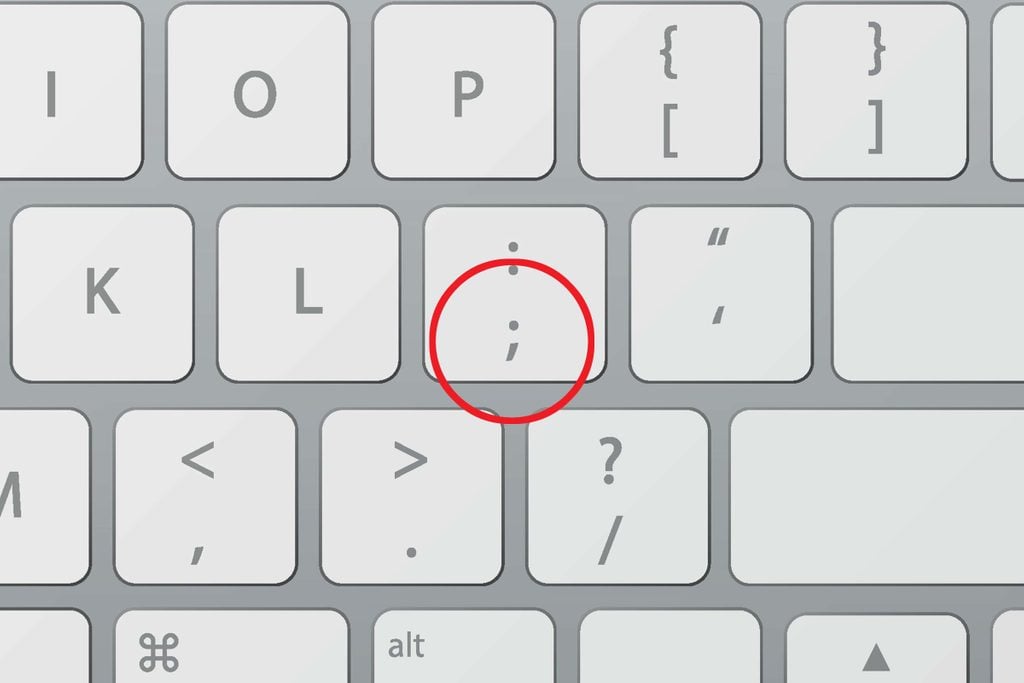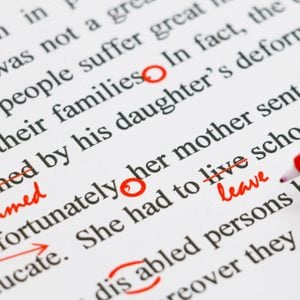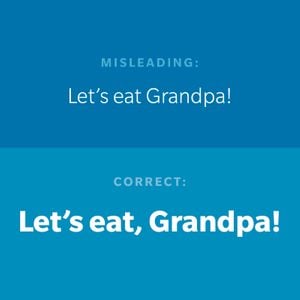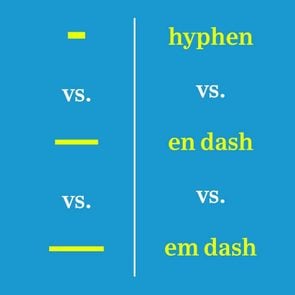Here’s When You Should Use a Semicolon
Updated: Sep. 24, 2021

The semicolon is the comma's first cousin, but it works a little bit harder; it also makes you look smarter.
What is a semicolon?
The semicolon is used to indicate a pause, usually between two main clauses, that needs to be more pronounced than the pause of a comma. The hybrid between a colon and a comma, it is often considered one of the more pompous punctuation marks. In reality, it gets a bad rap just because few people know how and when to use a semicolon (admittedly, it can be a confusing grammar rule).
So what are the practical ways to implement this little grammatical workhorse? Read on to see when to use a semicolon and how it can help you merge connected thoughts, separate listed items clearly, and form a bridge to another sentence. Knowing these will help you avoid a grammar mistake that could make you look bad, after all.
Why use a semicolon?
In the classic grammar and style manual, The Elements of Style by William Strunk and E.B. White (first published in 1919), the case for the semicolon is laid out clearly: “If two or more clauses, grammatically complete and not joined by a conjunction, are to form a single compound sentence, the proper mark of punctuation is a semicolon.”
In simpler terms, that means you can use a semicolon to separate two complete sentences that are related but not directly linked by a connecting word like “but” or “so.”
Example: “She didn’t show up to work today; she said she had a headache.”
Who uses semicolons?
The short answer: copy editors, professional writers, and you—if you’re savvy. “If words are the flesh and muscle of writing, then punctuation is the breath, and a good writer will make good use of it,” says Benjamin Dreyer of Penguin Random House, author of the forthcoming book Dreyer’s English. The semicolon is one of his favorite pieces of punctuation, and it was one of America’s great authors, Shirley Jackson, who inspired the admiration. “Shirley Jackson loved her semicolons,” says Dreyer. “I think that’s all the defense they need. The first paragraph of The Haunting of Hill House—one of the great opening paragraphs I can think of—includes three of them.”
Here is Jackson’s sublime first paragraph:
“No live organism can continue for long to exist sanely under conditions of absolute reality; even larks and katydids are supposed, by some, to dream. Hill House, not sane, stood by itself against the hills, holding darkness within; it had stood so for eighty years and might stand for eighty more. Within, walls continued upright, bricks met neatly, floors were firm, and doors were sensibly shut; silence lay steadily against the wood and stone of Hill House, and whatever walked there, walked alone.”
If you’re confused about apostrophes, too, don’t worry—here’s when to use an apostrophe (and when you shouldn’t).
Why and when to use a semicolon instead of a comma?
According to Dreyer, “independent sentences don’t hang together well with commas unless they’re as terse as ‘He came, he saw, he conquered,'” he explains. “For anything of greater length, a semicolon is simply better, stronger glue than a comma, while a period is too divisive.” It’s also grammatically incorrect to link two complete sentences using a comma; a semicolon acknowledges that they’re two complete sentences, even if they are related.
Example: “She didn’t eat the banana; instead, she ate the apple.”
If you haven’t used a semicolon right in the past, don’t worry; it’s a grammar error even smart people make.
When to use a semicolon
It helps to think of a semicolon as sort of a soft period. “Semicolons provide the right link between two essentially independent thoughts that one wants to present as just shy of independence,” explains Dreyer. According to yourdictionary.com, “[The semicolon] shows a closer relationship between the clauses than a period would show.”
Example: “David was getting hungry; he suddenly regretted skipping breakfast.”
When to use a semicolon in a list
In lists, we generally use commas to separate the items. For example, at the market, I’ll be picking up yogurt, blueberries, and coffee. However, sometimes there are lists that contain commas, so it gets confusing unless you separate those items using semicolons.
Example: I’ll be picking up yogurt, which I know needs to be organic; blueberries, because they’re in season and on sale; and coffee, so Daddy will actually be able to wake up in the morning.
Semicolons keep the items in the list neatly contained, so your meaning is always clear. Don’t miss these other common punctuation mistakes everyone needs to stop making.
When to use a semicolon before a transition
Use a semicolon to merge two sentences after a transitional phrase such as “however” and “as a result.” You probably already know to use a comma after the transitional phrase (“However, I still got the discount”), but you may not know that you can use a semicolon before the transitional phrase to form a bridge to the previous sentence (“The sale was officially starting on Saturday; however, I still got the discount on Friday because I had a special code”). You could technically use a period in that instance, but a semicolon signals that the thoughts are connected.
Examples: “Everyone knows he deserves a raise; of course, he won’t get one with the current budget cuts.”
“Her email is blowing up; for example, she got 50 messages in the last 10 minutes alone.”
When not to use a semicolon
When you have a conjunction—a connecting word such as “but,” “and,” or “so”—a semicolon is unnecessary. In those cases, the correct punctuation mark is a comma. So it would be incorrect to write “Judy jogged on the pavement; but it wasn’t good for her knees.”
The correct version, using a comma, would be “Judy jogged on the pavement, but it wasn’t good for her knees.” Of course, if you got rid of the “but,” a semicolon would be appropriate: “Judy jogged on the pavement; it wasn’t good for her knees.”
Now that you’ve mastered when to use a semicolon, check out these grammar rules that help you sound smarter.
Sources:
- Yourdictionary.com: “Managing the Punctuation Jungle”


